|
HOME: www.hiltonpond.org |
|||
THIS WEEK at HILTON POND Subscribe for free to our award-winning nature newsletter (Back to Preceding Week; on to Next Week) |
MID-SEPTEMBER MISCELLANY 2015 As September progresses and summer wanes, the angle of the Earth relative to the Sun becomes less favorable for warm-weather creatures at Hilton Pond Center. By mid-month seasonal changes become more and more pronounced, Normally at this time of year a foray into one of the small meadows that dot our 11-acre property allows us to feast eyes on the bounty of blossoms on a favorite native plant--Schweinitz's Sunflower, Helianthus schweinitzii. We have a fine specimen of this federally endangered species that during the past decade has shown robust vegetative growth and an abundance of fall flowers (single stalk, above right).
All text, maps, charts & photos © Hilton Pond Center This year, however, the sunflower's multiple stalks withered in spring/summer drought and despite efforts to water the plant in late June it never rebounded. Normally vibrant eight-foot-tall stems only grew to 24" or so (above) and, to make matters worse, they appear to have been nibbled by White-tailed Deer. The result was a complete absence of any flowers on this endemic Piedmont Prairie plant. We're hopeful the sunflower's substantial tuberous root has enough stored energy to enable it to sprout again next spring at the Center; it would be calamitous to lose our only example of a scarce species that these days grows only in isolated places around the Charlotte NC region.
All text, maps, charts & photos © Hilton Pond Center One of the most exciting things about mid-September at Hilton Pond Center is the arrival of fall migrant birds we haven't seen since the preceding spring--if then. It's always a delight to capture and bands these long-distance travelers in the hope they will be encountered on wintering grounds in the Neotropics or show up again on their next trip back north. One distinctive migrant that hits our nets most years is the Rose-breasted Grosbeak. Although this species nests in all North Carolina mountain counties, to our knowledge there are no documented breeding records for RBGR in South Carolina--even in the Palmetto State's Blue Ridge counties. Adult males are easily identified by black-and-white plumage accented by a eye-popping pink splotch on the chest, but brown-and-white females and immature males look very much alike--until one examines the under-wings that are yellow in females and bright pink in males (as above). Note the near-absence of rose markings on the breast of the male in the photo--something that might be misleading when viewing the bird from a distance.
All text, maps, charts & photos © Hilton Pond Center Despite the rosiness of Rose-breasted Grosbeaks, the most colorful mist-netted birds this week came in various shades of yellow--meaning, of course, fall migrant warblers. The first of these was an easily identified species--Hooded Warbler--that was especially interested because it was an adult female (above) that showed a bit of the dark mantle and bib usually associated with adult males. Indeed, older female HOWA sometimes take on a male-like appearance, even so much so two parents can't be differentiated with certainty at the nest. Although a few singing males of this species have been sighted at Hilton Pond Center, we suspect the bird we caught was a migrant. Fledglings Females with brood patches and recent fledglings of this specie also indicate they are local breeders; even so, we've only banded 52 of them since 1982.
All text, maps, charts & photos © Hilton Pond Center Only slightly more common--just 67 banded in 34 years--are Northern Parulas, whose common name is shared with the entire Wood Warbler Family (Parulidae). NOPA, among the smallest warblers, are one of the first migrants to appear in spring at Hilton Pond where we've captured females with active brood patches--a sure sign they nest locally. Interestingly, in northern parts of its range (or in the mountains) the parula nests in clusters of Usnea lichens (Old Man's Beard), while in the Carolina Lowcountry pairs opt for Spanish Moss (an epiphytic bromeliad). We have neither of these on the property, so we're guessing nests here would be in clumps of dead leaves. The individual above was an immature male whose pale rusty necklace undoubtedly will become more prominent after future molts.
All text, maps, charts & photos © Hilton Pond Center The Center's final "yaller wobbler" of the period was a Common Yellowthroat we identified as immature--in part because of his still-soft gape (corner of the mouth) that should harden and darken as he ages. More important, since his grayish juvenal cheeks had not yet been replaced with black feathers typical of an adult male we suspect he must have hatched quite late in the 2015 breeding season. Common Yellowthroats are more likely to cross our banding table than many warbler species; we've handled 362 through the years; that 211 of those were banded 1990-1995 indicates the species is in decline locally, perhaps due to loss of nesting habitat as our brushy thickets around Hilton Pond have given way to young woodland with very few shrubs beneath. COYE breed statewide in South Carolina, but we've never found a nest or caught a fledgling or an adult in breeding condition at the Center. Although yellow hues are prevalent in feathers of these migratory warblers, one color that seems relatively scarce in nature is blue. (The sky really isn't blue, of course, but appears so because of the way atmospheric molecules scatter light against the black of space.) We do have some "blue" birds but they, too, are really black and their feathers--like the sky--look blue because of scattering. Metallic blues show up in some freshwater fish and dragonflies and Blue-tailed Skinks, but relatively few wildflowers are blue--take Bluets and Blue-eyed Grass, for example--so when we do come across something that IS blue in the out-of-doors it alway merits a closer look.
All text, maps, charts & photos © Hilton Pond Center Such was the case this week at Hilton Pond when we spied a splotch of deep, rich blue on a Winged Elm tree. On the protected underside of a down-turned dead branch--nearly hidden from human eyes--was a fungus appropriately named Cobalt Crust, Terana caerulea (AKA Velvet Blue Spread or "blue velvet on a stick"). This is one of the "white rot fungi," so effective in breaking down lignin in cell walls of dead plant material that only white cellulose remains. While Cobalt Crust plays a valuable natural role as decomposer it also is used to produce cortalcerone, an antibiotic that restricts growth of Streptococcus pyogenes bacteria that can cause life-threatening systemic infections in humans. Cobalt Crust itself dies in harsh rays of the sun, so the best place to find it is beneath old logs. There it often competes with other crust fungi in a wide array of colors from red to yellow to orange to black--but it always stands out as one of those relatively rare natural examples of the color blue.
All text, maps, charts & photos © Hilton Pond Center We were gone from Hilton Pond Center almost all of 23 September 2015, but after arriving home that afternoon looked out the back window of the old farmhouse and saw an unbanded hummer zipping around. We waited a few minutes and at 5 p.m. pulled the string on a trap that safely snared a young female Ruby-throated Hummingbird (see photo above of this now-famous individual). She became #240 for the year--eclipsing the Center's all-time record of 239. And for good measure, one of our passive Dawkins-style hummingbird traps snared a young male to make #241. 'Twas a great way to mark the autumnal equinox as the summer season and September were fast coming to a close. All text, maps, charts & photos © Hilton Pond Center
Checks can be sent to Hilton Pond Center at: All contributions are tax-deductible on your |
|---|
|
"This Week at Hilton Pond" is written and photographed by Bill Hilton Jr., executive director of Hilton Pond Center for Piedmont Natural History
|
|
|
Please refer "This Week at Hilton Pond" to others by clicking on this button: |
Comments or questions about this week's installment? Send an E-mail to INFO. (Be sure to scroll down for a tally of birds banded/recaptured during the period, plus other nature notes.) |

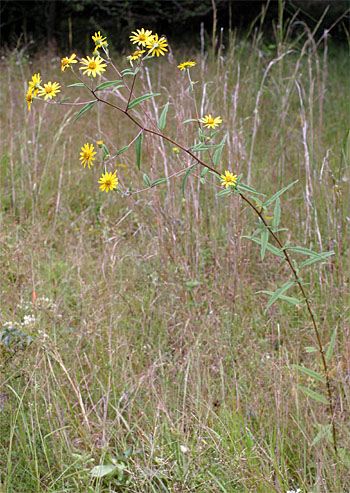 with a few drought-stressed Sweetgum trees already showing yellow foliage and migrant warblers hatched up north now flitting around our tree canopy--and into our nets. To better understand such seasonal change, this week at Hilton Pond we were out and about on our trails, documenting nature's unavoidable march toward autumn.
with a few drought-stressed Sweetgum trees already showing yellow foliage and migrant warblers hatched up north now flitting around our tree canopy--and into our nets. To better understand such seasonal change, this week at Hilton Pond we were out and about on our trails, documenting nature's unavoidable march toward autumn. 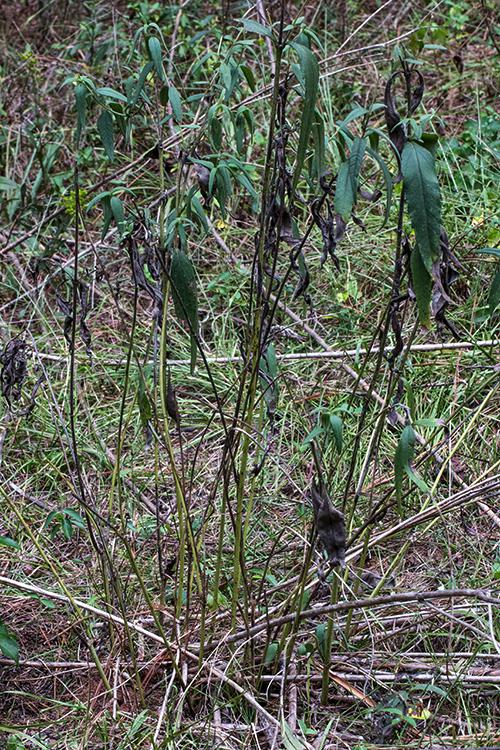
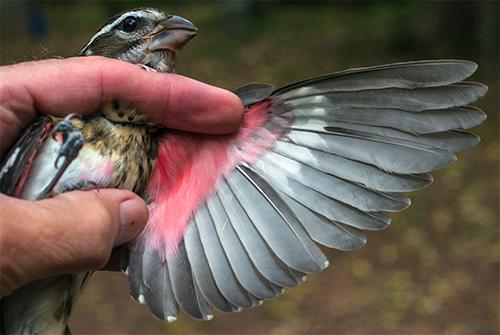
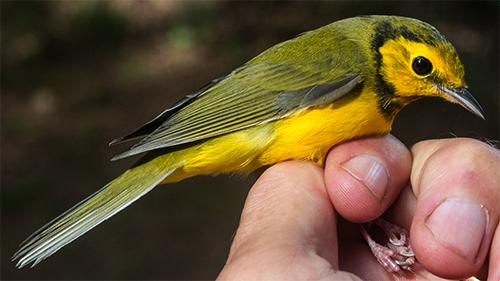
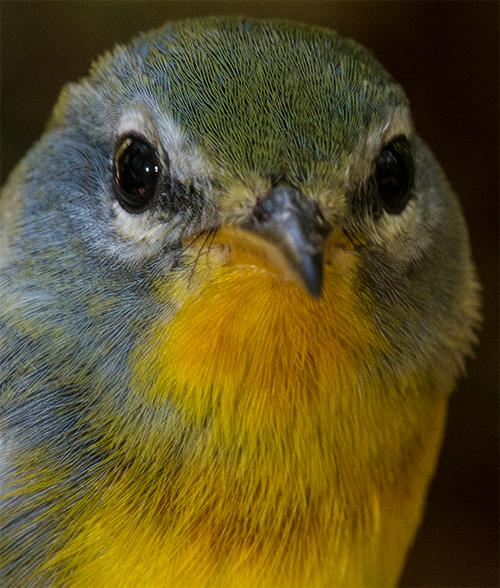
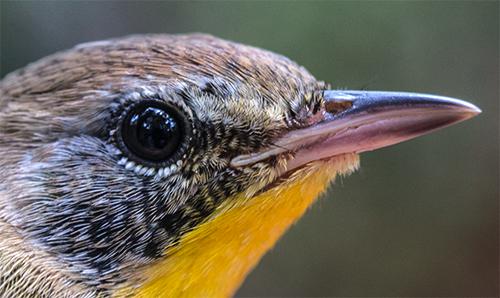
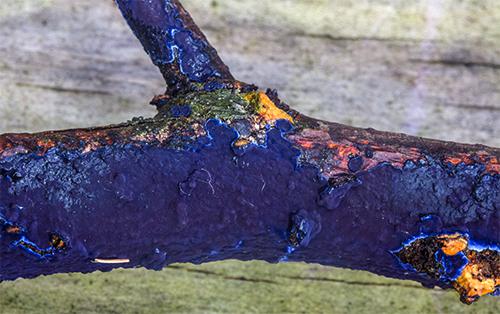
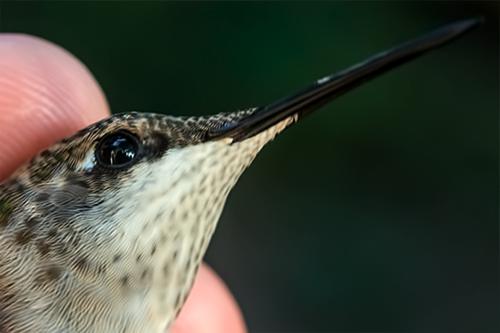









 Please report your
Please report your